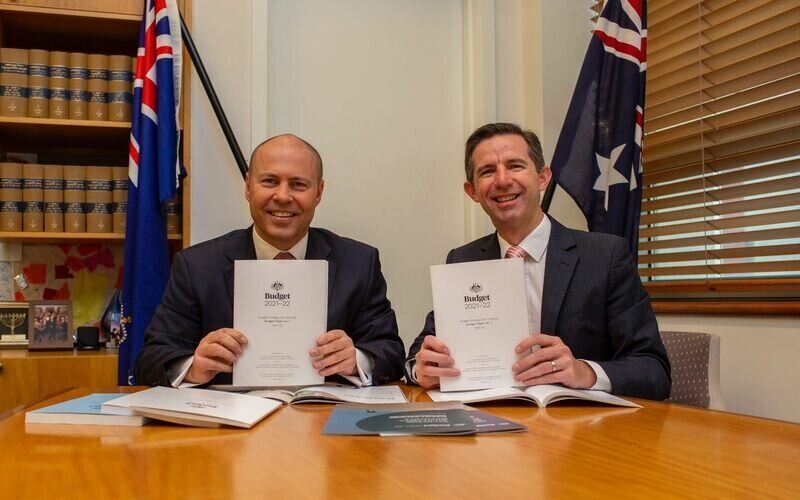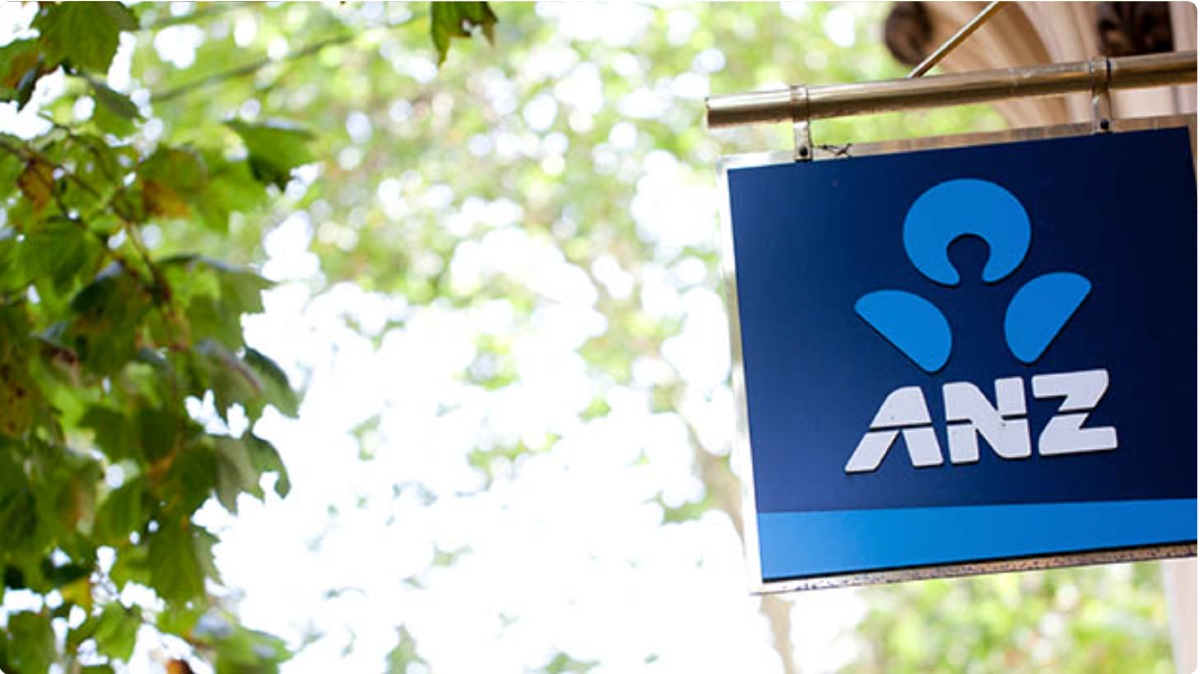The second budget in just six months following last year's delayed COVID budget, the Treasurer has unveiled the government's latest spending plan which takes the deficit to $161 billion this year, before falling to $57 billion in 2024‑25.
Intended to turbocharge Australia's economic recovery from COVID-19, some of the biggest items set to affect everyday Aussie savers in 2021-22 include:
- Personal income tax cuts and business tax incentives - last year's $1,080 low and middle-income tax relief will be extended for another year
- Extending the construction commencement period of existing applicants for the HomeBuilder scheme, modifying existing schemes like the First Home Loan Deposit Scheme (FHLDS) and the First Home Super Saver Scheme (FHSSS), and creating the Family Home Guarantee, all to the cost of $2 billion
- A $1.7 billion investment in childcare
- Removing the $450 per month minimum income threshold for the superannuation guarantee, and allowing over-60s to deposit $300k into super by downsizing their homes
- A $10 billion Government guarantee for natural disaster prone areas in Northern Australia
"The Morrison Government’s plan to secure Australia’s recovery will rebuild our economy and create more jobs to ensure we come back stronger from the COVID‑19 induced recession," Treasurer Frydenberg said.
"The Australian economy has rebounded at its fastest pace on record over the latter half of last year, outperforming all major advanced economies in 2020.
"The 2021‑22 Budget will consolidate these gains and put us on course for the unemployment rate to fall below 5%, reaching 4¾% by the June quarter 2023."
Related: Is Australia's economic recovery actually the best?
Other major items of interest in this year's budget are as follows:
- Doubling the commitment to the JobTrainer Fund to $2.7 billion, aimed at creating more than 170,000 new apprenticeships and traineeships
- Providing $17.7 billion to fund aged care reforms over four years and $13.2 billion for the National Disability Insurance Scheme (NDIS)
- A new $2.3 billion commitment to mental health care and suicide prevention
- An additional $15.2 billion over ten years for infrastructure development
- Investing $1.2 billion in the digital economy through the Digital Economy Strategy
- Another $1.2 billion for industries hard hit by the pandemic, such as aviation and tourism support
- $1.9 billion allocated for the vaccine rollout
See below for more information on some of these key items.
Tax relief extended
As predicted by many, the 2020-21 low- and middle-income tax offset (LMITO) has been extended for another year, meaning many Australians will receive tax relief of up to $1,080 (for individuals) or $2,160 (for couples):
| Wage | Offset |
|---|---|
| $37,000 or less | $225 |
| Between $37,001 and $48,000 | $255 plus 7.5 cents for every dollar above $37,000 up to a max of $1,080 |
| Between $48,001 and $90,000 | $1,080 |
| Between $90,001 and $126,000 | $1,080 minus three cents for every dollar of the amount above $90,000 |
These tax cuts will cost the budget a further $7.8 billion.
"Treasury estimates that extending the LMITO will boost GDP by around $4.5 billion in 2022-23 and will create an additional 20,000 jobs by the end of 2022‑23," budget papers say.
"Lower taxes means that hard-working Australians will keep more of what they earn, allowing them to spend more, help grow the economy and create more jobs."
These tax cuts, which were only temporary at first, actually prevented a tax rise for about 10 million Australians.
"The extension of the Low and Middle Income Tax Offset is welcome. This measure ensures that 10.2 million low and middle income Australians will not see a tax hike of up to $1,080 next year," Director of Tax Communications at H&R Block Mark Chapman said.
"However, let’s call this what it is and ignore the government spin; this isn’t a tax cut, it's simply the deferral of a tax rise.
"Nobody should be counting the extra dollars in next year’s pay packets because there aren’t any; the tax burden for low and middle income individuals next year is exactly the same as it was this year."
More affordable housing for some
A major part of this budget includes the following housing packages, worth a total of $2 billion in government investment:
- Extending the six month construction commencement period for HomeBuilder to 18 months for all existing applicants into 2022
- 10,000 Family Home Guarantee spots made available over four years, allowing some single parents with dependents to secure a home loan (without paying LMI) on a new or existing property with a deposit of as little as 2%
- Expanding the FHLDS (now the New Home Guarantee) with an additional 10,000 places in 2021/22 for first home buyers building a home or buying a newly-built home
- Increasing the amount of voluntary super contributions that can be released under the First Home Super Saver Scheme from $30,000 to $50,000
The Federal Government is also adding an extra $124.7 million in funding for states and territories to bolster public housing stocks.
"The Government recognises the importance of home ownership and the economic and social benefits it provides," Treasury said.
"That is why the Government is establishing the Family Home Guarantee, creating a pathway to home ownership for single parents to enter or re-enter the housing market."
Buying a home or looking to refinance? The table below features home loans with some of the lowest interest rates on the market for owner occupiers.
| Lender | Home Loan | Interest Rate | Comparison Rate* | Monthly Repayment | Repayment type | Rate Type | Offset | Redraw | Ongoing Fees | Upfront Fees | Max LVR | Lump Sum Repayment | Extra Repayments | Split Loan Option | Tags | Features | Link | Compare | Promoted Product | Disclosure |
|---|---|---|---|---|---|---|---|---|---|---|---|---|---|---|---|---|---|---|---|---|
5.54% p.a. | 5.58% p.a. | $2,852 | Principal & Interest | Variable | $0 | $530 | 90% |
| Promoted | Disclosure | ||||||||||
5.49% p.a. | 5.40% p.a. | $2,836 | Principal & Interest | Variable | $0 | $0 | 80% |
| Promoted | Disclosure | ||||||||||
5.64% p.a. | 5.89% p.a. | $2,883 | Principal & Interest | Variable | $250 | $250 | 60% |
| Promoted | Disclosure | ||||||||||
5.64% p.a. | 5.89% p.a. | $2,883 | Principal & Interest | Variable | $248 | $350 | 60% |
| Disclosure |
A major investment in childcare subsidies
Already announced before tonight's budget, the government is putting $1.7 billion towards childcare subsidies, aimed at increasing the affordability of childcare for low‑ and middle‑income families.
This package will subsidise up to 95% of childcare costs for families with two or more children from 2022, and will also remove the $10,560 per child cap for subsidies.
The Treasurer said this will leave 250,000 families better off by an average of $2,200 each year.
"Childcare is an important driver of higher workforce participation and women’s economic security," he said.
"(This will give) more parents, especially women, the choice to take on extra work."
The Grattan Institute’s Danielle Wood said this package tackles “some of the worst out-of-pocket costs and workforce disincentives”, but said it remains too limited in scope.
“Almost 1 million families now use child care, and many would like to work more if they could afford to do so. A broader policy supporting more families would have much larger and more widespread economic benefits,” Ms Wood said.
Superannuation changes (again)
Seemingly always being chopped and changed, four major changes have taken place regarding superannuation in this year's budget:
- The Government will remove the current $450 per month minimum income threshold for the superannuation guarantee
- It will allow those over 60 to contribute up to $300,000 into their super if they downsize their home
- Older Australians (67 to 74) will no longer need to meet a work test before they can make voluntary contributions to their super
- It has also enhanced the Pension Loan Scheme, providing immediate access to lump sums of around $12,000 for singles and $18,000 for couples
"We want all Australians to get the most out of the superannuation system," Mr Frydenberg said.
"On average women retire with less superannuation than men. This (removing the $450 minimum income threshold) will improve economic security in retirement for around 200,000 women."
Related: How to check if COVID-19 has affected your superannuation
Insurance protection for North Australians
A $10 billion government guarantee has been included in the budget to make insurance more affordable in Northern Australia.
The high frequency and severity of cyclones and other natural disasters in North Queensland are already making insurance premiums 'unaffordable' there, costing several times the Australian average in some cases for home, landlord, storm and car insurance.
The Government intends to establish a reinsurance pool for cyclones and related flooding, to commence from 1 July 2022, to combat this.
According to the Treasurer and the Prime Minister Scott Morrison, this will reduce insurance premiums across Northern Australia by over $1.5 billion for households, strata and small businesses over 10 years.
“I’ve listened to our local MPs and senators, I’ve sat down with residents and discussed the issue. Homeowners and businesses have been faced with crippling insurance costs, and in some cases, can’t get insurance at all," Mr Morrison said.
"It’s not ok, and we’re going to change that. Our plan will give more Australians in cyclone-prone areas access to affordable insurance.”
More than 500,000 residential, strata and small business property insurance policies in Northern Australia are expected to be covered by the reinsurance pool.
See also: How climate change could make insurance even more expensive
Image via Josh Frydenberg, Twitter (@JoshFrydenberg)

Ready, Set, Buy!
Learn everything you need to know about buying property – from choosing the right property and home loan, to the purchasing process, tips to save money and more!
With bonus Q&A sheet and Crossword!







 Bea Garcia
Bea Garcia
 Bernadette Lunas
Bernadette Lunas
 Harry O'Sullivan
Harry O'Sullivan
 Harrison Astbury
Harrison Astbury
 Brooke Cooper
Brooke Cooper

